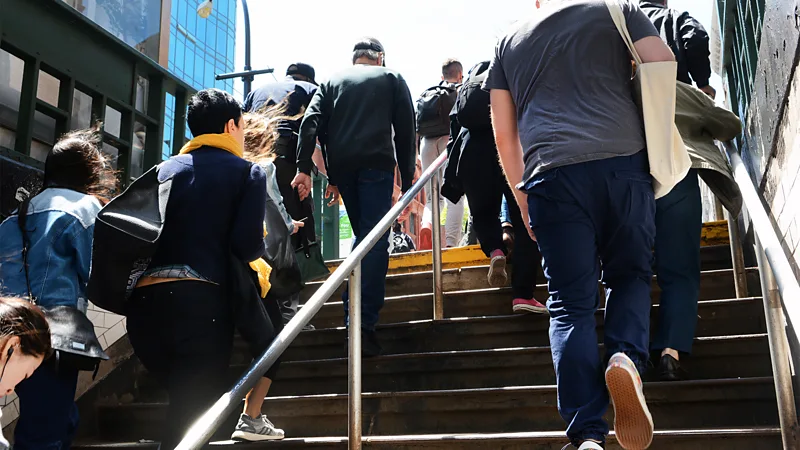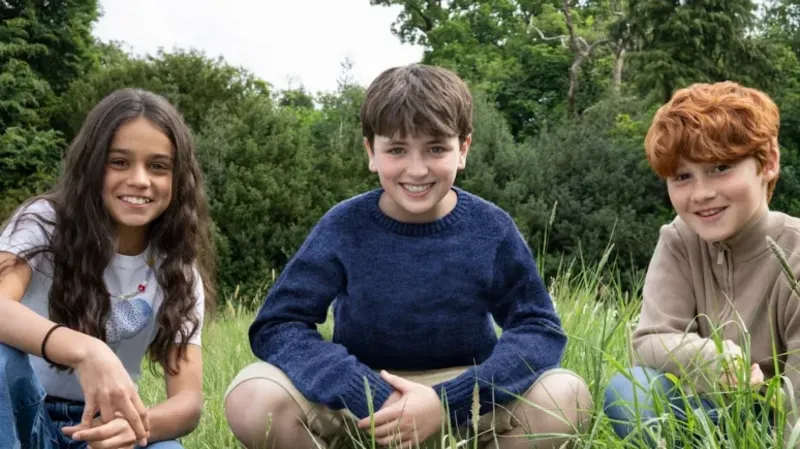Urban Forests: A Natural Solution to Climate change
Research work

Abstract
Around the world, a growing number of towns are embracing climate adaptation. Urban tree planting and preservation are huge aspects it.
However, little attention has been paid to the notion that urban forests would also be impacted by climate change.
Governments worldwide are enacting policies and laws in their quest to adhere to the United Nations Framework Convention on Climate Change(UFCCC) and the Paris Agreement pledges to reduce emissions, Climate adaptability and support.
For instance, in 2016, the Ghanaian government pledged to restore 2 million hectares (ha) of deforested and degraded land by 2030.
The project was dubbed the “Green Ghana Project|”. Such policies shows the collective commitment in the fight against Climate change.
Definitions: Impacts and Effects of Urban Forests in the climate change fight
Climate is changing rapidly at a global scale and is projected to change at an even faster rate in the coming decades (IPCC, 2014). Urban areas (areas with populations of 50,000 or more) can be particularly vulnerable to these changes due to urban heat island effects and exacerbated effects of drought and extreme storms due to impervious cover and a high concentration of built structures (Hunt and Watkiss, 2011; Wilby, 2007). Recognizing the potential for changes in the climate to disrupt their social and economic fabric, cities around the world are developing strategies for reducing greenhouse gas emissions and modifying programs to adapt to a warmer future.
The urban forest is defined as all publicly and privately owned trees within an urban area— including individual trees along streets and in backyards, as well as stands of remnantforest(Nowak et al., 2001); it is often considered an important component in helping cities adapt to these changes because of its benefit to both people and to nature (Bulkeley and Betsill, 2013). Co-benefits, also termed ecosystem services, that trees in urban regions provide include reducing the urban heat island effect, storing carbon, reducing pollution, mitigating storm water runoff, and providing critical habitat for resident and migratory birds (Cook et al., 2013; Kowarik, 2011; Livesley et al., 2016; Nowak et al., 2013a; Nowak et al., 2014).

It is estimated that the urban forest in the Chicago region provides $137 million per year in pollution removal, $14 million per year in carbon sequestration, $44 million/year in energy reduction, and $1.3 million/year in reduced carbon emissions with $51.2 billion in compensatory value (Nowak et al., 2013c). Despite their important role in helping cities adapt, urban forests may themselves be vulnerable to climate change (Ordóñez and Duinker, 2014). There is increasing empirical evidence documenting the impacts on urban forests both at the global level and local level due to current climate change (Hellmann et al., 2010; Hayhoe and Wuebbles, 2008; IPCC, 2014).
Urban sites are often already subject to more extreme heat, temperature fluctuations, and flooding than non-urban sites. Although changes in the climate may help reduce some urban stressors (such as a reduction in road salt use with warmer winters), urban trees and forests that are already under stress from the intense urban environment are likely to experience added and interactive stress from the effects of global climate change (Gill et al., 2007; Kirshen et al., 2007). Devastating tree losses from large disturbances can lead to economic burdens on cities to remove diseased and dying trees and through the reduction in ecosystem service benefits as trees decline or are lost (Kovacs et al., 2010).
Advantages of Urban Forests
Urban forests can assist urban society in mitigating the effects of climate change as well as reducing its effects.
Growing trees absorb carbon dioxide from the atmosphere and store it in their biomass, which is why urban forests are crucial to the fight against climate change.
Moreover, urban forests offer a greater variety of advantages to the community. They help us maintain a connection to nature by improving the appeal of towns as places to live and serving as habitats for a range of species. They offer all-natural remedies to lessen the effects of severe weather.
They are major role players in biodiversity. This is because trees sustain ecosystems, especially networks of pollinators, by giving space for species.
Trees are an important focal point for education outside of the classroom Trees enhance the attraction of locations to live and work, drawing in business and boosting the economy.
Urban forests(trees) are sources of food. They also aid in mitigating noise pollution.
One major impact of Urban forests in mitigating the impact of climate change which I have experienced is how the creation of green spaces minimises the impact of flooding in my community.

My NGO is located in Bortianor, a conservative community in the Greater Accra region of Ghana, and within Bortianor is a popular fishing town called Tsokome. Just like many rural fishing towns in Ghana, Tsokome is bedevilled with a lot of challenges, especially in the areas of Health, Education, and Environment. Tsokome experiences brutal perennial flooding due to the lack of proper waste management and drainage systems. Residents resort to disposing of their refuse in waterways. Plastic waste and filth are left to accumulate in open dumpsites, gutters, rivers, and oceans. The entire township gets engulfed in plastic and filth which inadvertently leads to flooding.
As part of my commitment as a climate change activist to ensure a cleaner environment, I embarked on a climate change literacy program in Tsokome in August 2023. My climate literacy program was in the form of a 3-day town hall meeting with the chief and residents of Tsokome, officials from the Health and Environmental department of the local Municipal Assembly, officials from the local National Disaster Management Organization(NADMO), and support from the Ghana alumni of the Oxford Climate Journalism Network. My purpose for the town hall meeting was to provide intensive sensitization and education on how indiscriminately disposing of refuse contributes to plastic pollution and flooding. Another purpose was to become the bridge between the residents and the Municipal Assembly and to provide the platform for a healthy discourse on the Environmental and Health needs of the people of Tsokome.
At the end of the 3-day exercise, I achieved three objectives. I provided free dustbins to residents to help curb the issue of indiscriminate disposal of refuse. I also successfully got the Municipal Assembly to begin a daily radio sensitization exercise as well as weekly announcements via audio vans to caution and educate residents on plastic pollution. Again, I introduced a tree-planting initiative dubbed " Green Tsokome". This exercise was to help plant trees and create enough green spaces to help with the issue of flooding. My main objectives for the exercise were to effect behavioural change, and help curb the flooding issue and as Ghana awaits its perennial rains this year, the people of Tsokome seem ready and are hopeful that the impact of the floods will be minimal.
Weakness
Urban tree planting and increasing the amount of urban forest canopy cover are frequently regarded as essential tactics for lessening the effects of climate change in urban settings. However, changes in the suitability of tree habitats, variations in pests and diseases, and variations in extreme weather events can also make urban trees and forests sensitive to climate change.
Conclusion
With increasing urbanization and climate change, many cities want to implement urban green infrastructure to make them more livable. The enhancement of urban forests frequently results in improvements to the environment and socioeconomic status of a country and/or region.
References
Bulkeley and Betsill, 2013: Revisiting the Urban Politics of Climate change
Cook et al., 2013: A framework for adapting urban forests to Climate change
Gill et al., 2007: Characterising the urban environment of UK cities and towns: A template for landscape planning
Hayhoe and Wuebbles, 2008: Landscape and Urban Planning
Hellmann et al., 2010: Climate change impacts on terrestrial ecosystems in metropolitan Chicago and its surrounding, multi-state region
Hunt and Watkiss, 2011: Climate change impacts and adaptation in cities: A review of the literature
IPCC, 2014: Climate change 2014: Synthesis Report
Kirshen et al., 2007: Interdependencies of urban climate change impacts and adaptation strategies: a case study of Metropolitan Boston USA
Kovacs et al., 2010: A bioeconomic analysis of an emerald ash borer invasion of an urban forest with multiple jurisdictions.
Kowarik, 2011: Novel Urban Ecosystems, Biodiversity and Conservation
Livesley et al : Urban Forests Ecosystems Services at Different Scales
Nowak et al 2016: Understanding the benefits and costs of urban forest ecosystems
Ordóñez and Duinker, 2014: Assessing the vulnerability of urban forests to climate change
Wilby, 2007: Constructing Climate Change Scenarios of Urban Heat Island Intensity and Air Quality
Source: Florence Kyei
The author is an Environmental & Climate Journalist and Lead Writer at Lead News.
Email: [email protected]
Linkedin: https://www.linkedin.com/in/florence-kyei-970764140
Twitter: https://x.com/evlogia_7
























































